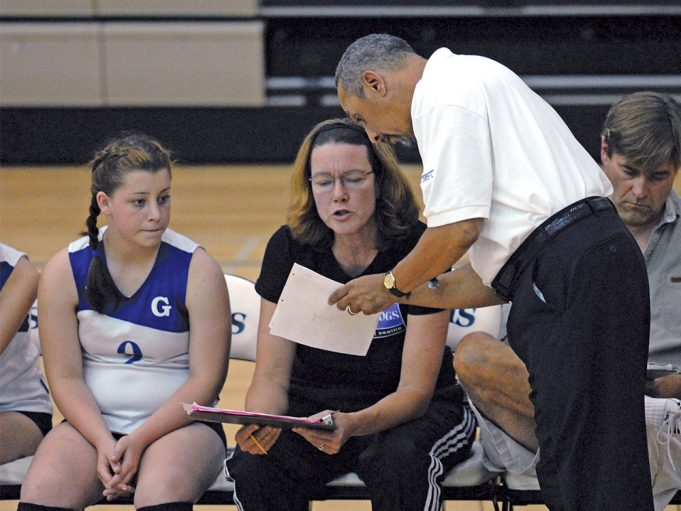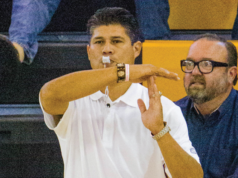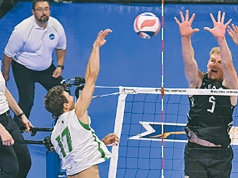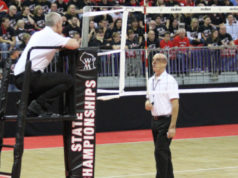Have you ever looked back on a tough situation in a match, one that maybe you wish you had handled better, and said to yourself, “Boy, that situation really surprised me”? Then, upon further reflection, maybe in the post-match debriefing with your officiating team, you realize that the events leading up to that tough situation were there for you to see and you just missed them. You (and likely your team) may have, if only for a brief time, fallen victim to a loss of situational awareness (SA).
Aviation safety researchers have been studying SA in pilots for several decades. Clearly, even a momentary loss of awareness can have disastrous results in that venue. That research has led to many scholarly definitions of what it is, but I like the definition offered by the U.S. Coast Guard. “Situational awareness is the ability to identify, process and comprehend the critical elements of information about what is happening to the team with regards to the mission. More simply, it’s knowing what is going on around you.”
Know what is going on around you
That emphasis is not mine, it is included in the Coast Guard’s definition. What attracts me to that definition is precisely that last line. Simple enough that even we pilots can understand it.
Dr. Mica Endsley’s research into SA built upon earlier models to develop a three-stage model of SA formation. The three stages, or steps, are perception, comprehension and projection.
Perception involves “perceiving the status, attributes and dynamics of relevant elements in the environment.” For a pilot, those elements are the basics of the aircraft and its systems, the external environment and any other elements affecting the flight. For a referee, those include, but are not limited to, the basics of who the match participants are and where they are on the court, the score, the signals your officiating team may be making, the timeout and substitution status of both teams, the coaches’ behavior, and the list could go on and on. Sometimes, especially early in our officiating career, we concentrate so intently on remembering the basics of the rules that we can miss those elements that can help us move from Level 1 SA to Level 2.
Endsley goes on to define Level 2 SA as, “Comprehension of the situation based on a synthesis of disjointed Level 1 elements.” To both officials and pilots, we approach Level 2 when we begin to “make sense” of those elements we perceive in our Level 1 SA state. The elements begin to form patterns in our brains that explain the environment around us. Pilots take that one step further by creating a mental model of the current state of their aircraft and the environment around them. Officials who work with an officiating team can do much the same. I would submit that your best officiating experiences happen when your mental model of the match mirrors that of your partners’. I liken that to being “inside each other’s heads.”
Forecasting future actions accurately a critical skill for success
The “ability to project the future actions of the elements in the environment, at least in the near term” is what Endsley describes as Level 3 SA. Pilots will use that higher level of SA to make decisions that keep the aircraft (and thus themselves) in the safest state possible. An example would be knowing of a thunderstorm in their flightpath well ahead of time, knowing the aircraft performance capabilities preclude climbing over the storm, and taking early action to go around the storm. Officials have to be careful once attaining Level 3 SA, as making a decision based on your projection of future events would more commonly be called making an assumption. Officials need to anticipate, but never assume.
So, what are some of the barriers we face in our quest for situational awareness?
Lack of preparation.
If we have officiated the teams earlier in the year, or are able to study video of the teams, we can head off surprises. Additionally, knowing the rulebook cold and having solid mechanics lets you take in the “big picture” instead of worrying about the basics.
Fatigue.
I believe that can be one of the barriers that has the most effect on situational awareness. Fatigue affects the higher function of decision-making in our brain, making us much more susceptible to the next barrier.
Tunnel vision.
The cause of tunnel vision may be the aforementioned fatigue. Once the higher areas of brain function start to slow, we focus on that which can really hurt us. As a second referee, we zone in on the net, as that is a basic responsibility. But doing so causes us to lose any perception of the approach of the players, or of any back-row possibilities. It may also come from a lack of experience. That allows the stress of a new or unusual situation to overwhelm us.
Preconceptions.
If we allow our Level 3 SA (projection) to overtake the actual events, our brain will try to match the information we see to that perception of events, instead of the other way around.
As important as attaining an optimum level of SA is, it may even be more important to be able to recognize when you or your officiating team has lost SA. A primary red flag is a feeling of confusion. That may manifest itself in that “deer in the headlights” look from your partner, a line judge missing an obvious call or you as second referee losing track of a team’s rotation. If you recognize that in yourself, get back to basics. Work on taking in the whole match environment. If you recognize it in a teammate, an encouraging look, gesture or even a quick conference during a timeout can bring him or her back to that shared mental model of the match that we need to strive for.
To my fellow pilots, I wish “Blue skies and tailwinds.” And I wish you the same.
What's Your Call? Leave a Comment:
Note: This article is archival in nature. Rules, interpretations, mechanics, philosophies and other information may or may not be correct for the current year.
This article is the copyright of ©Referee Enterprises, Inc., and may not be republished in whole or in part online, in print or in any capacity without expressed written permission from Referee. The article is made available for educational use by individuals.


















